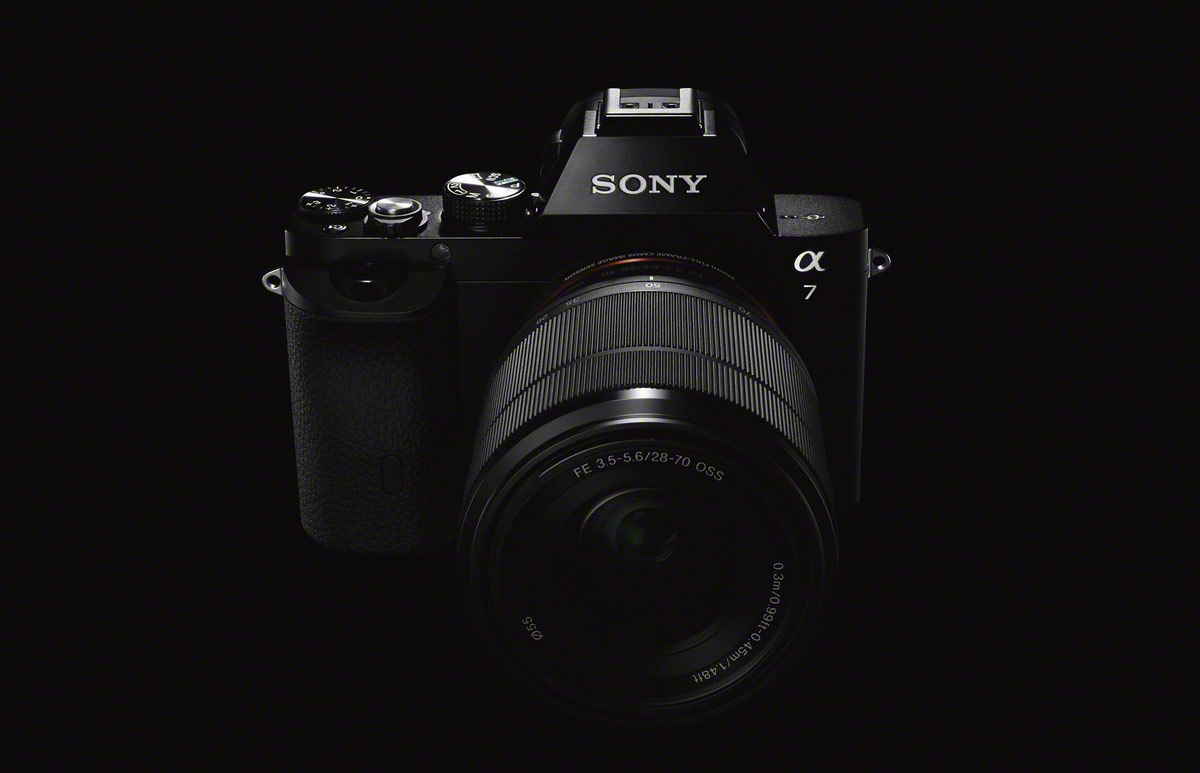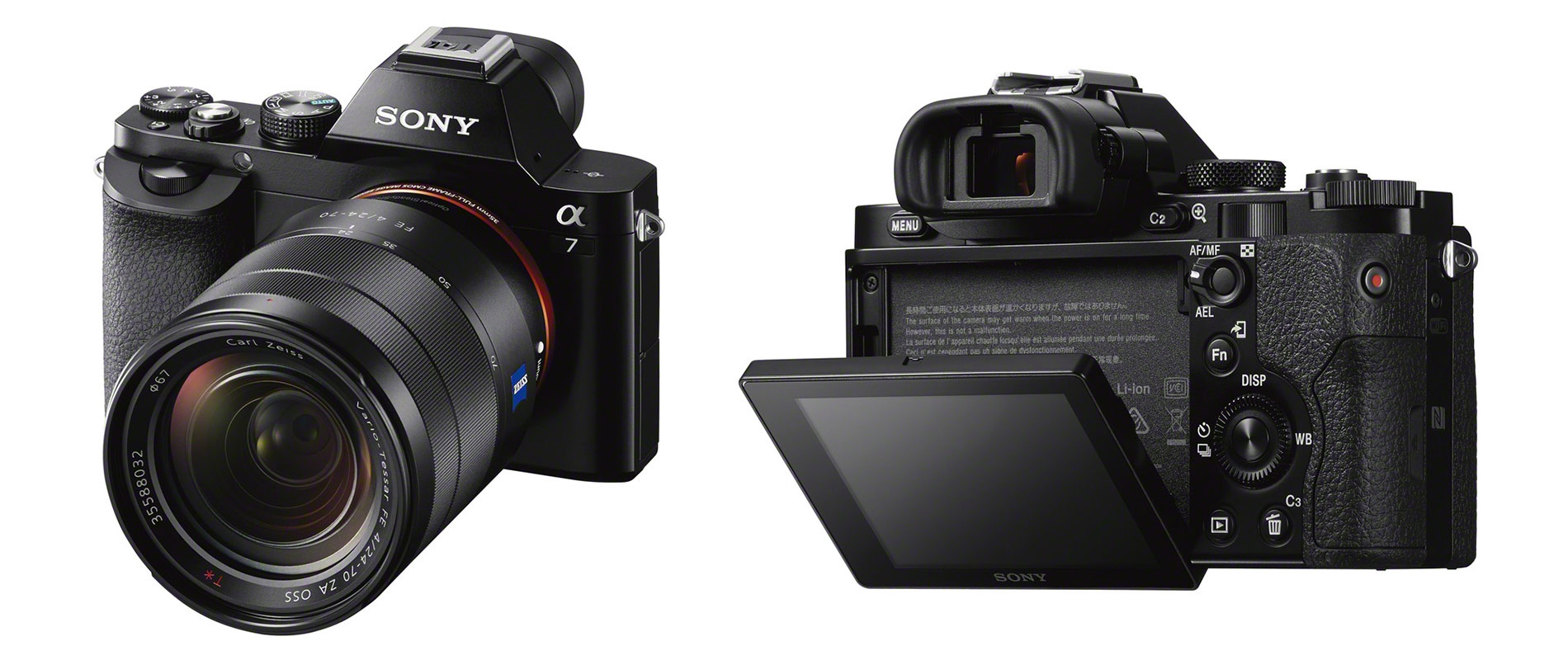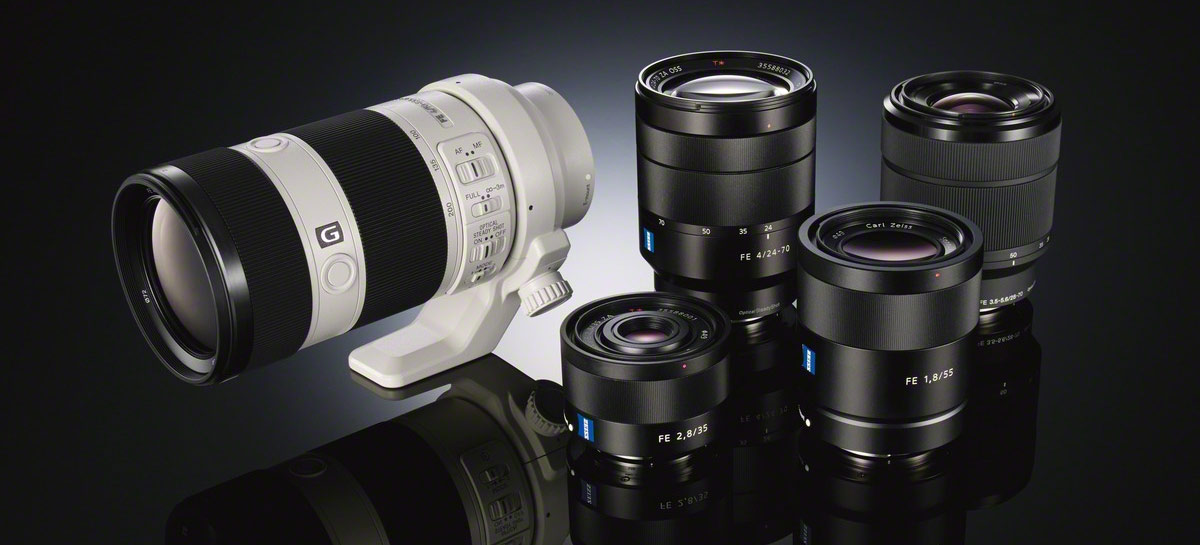Sony's Game Changing New Mirrorless Cameras: The A7 and A7r
 I’ve written quite a bit recently about Sony’s camera devision, and how the company, unencumbered by a legacy in the camera market, has really been pushing the envelope. Well, today, they have done it again. This morning Sony launched three new cameras, two of which are major game changers, and have the potential to take significant market share from Canon and Nikon. Those two cameras are Sony’s long rumoured e-mount full frame mirrorless cameras, the A7 and A7r.
I’ve written quite a bit recently about Sony’s camera devision, and how the company, unencumbered by a legacy in the camera market, has really been pushing the envelope. Well, today, they have done it again. This morning Sony launched three new cameras, two of which are major game changers, and have the potential to take significant market share from Canon and Nikon. Those two cameras are Sony’s long rumoured e-mount full frame mirrorless cameras, the A7 and A7r.
When Sony launched the RX1 last year, the little full frame compact camera captured the interest of may photographers, and while those who have used it have marveled at the image quality for such a small camera, the general response was that it was great, but it would be even better with an interchangeable lens. Well, now we pretty much have that in the new A7 and A7r. The rumor mill has been speculating about these cameras for quite some time, and to call them "highly anticipated" is something of an understatement.
The new cameras take their design cues from Olympus’s OM-D mirrorless camera, but instead of a micro four thirds sensor, they have a full frame 35mm sensor, in a body that, apparently is not much bigger than the diminutive Olympus. It’s quite a feat of engineering, but it doesn’t stop there. The A7 features a new 24 megapixel sensor, so it should be comparable to the Sony A99 or the Nikon D610, but the A7R features an impressive, AA Filter-less 36mp sensor, putting its output up there with the Nikon D800, all in a relatively tiny and light camera body. That is all very impressive in and of itself, but you are probably expecting such miniaturization to come at a significant cost, right? Well, you’d be wrong because the A7 will sell for $1698 (B&H) and the A7R will sell for $2298. Compare that to the Nikon equivalents. The D610 sells for $1997 and the D800 currently retails at $2995. With these new offerings, Sony has shattered the entry price to full frame.

There’s lots of other nice things about these cameras too. Sony seems to have learned from the original Nex rollout and is launching these cameras with a relatively strong lineup of high quality glass. The lenses use the same e-mount as the Nex cameras, but are now FE (full frame E) instead of just E. The launch lenses consist of the following:
Sony 28-70 f/3.5 - f/5.6 Kit Lens Zeiss 24-70 f/4 Zeiss 35mm f/2.8 Zeiss 55mm f/1.8 Sony G 70-200mm f/4

Some people on various comments have already moaned about the maximum aperture of some of these lenses, but they are still high quality and potentially sharp lenses. Also, by going with f/4 instead of f/2.8 Sony have kept the size down so the lens doesn’t overwhelm the size of the body. Also, they have announced plans to have 15 FE lenses by 2015, which means we can expect another 10 lenses to be introduced over the next year and a half.
The other huge advantage of this camera when it comes to lenses is that, because of the E-mount and the short distance between the mount and the sensor, you can adapt lenses from just about any manufacturer to fit the system. This has always been true of the NEX line, but now you can do this with full frame lenses and get the full potential from them. Metabones even have an adaptor for Canon lenses that will let you use autofocus (albeit slowly) with canon glass, and this works with the new full frame e-mount cameras too. (The Camera Store used it in their video test of the new Sony’s) Coupled with Sony’s excellent manual focus aids, this should be a great camera for using legacy lenses (or Leica glass) with.
All that is pretty great, but there’s even more good news! One of the biggest complaints about Sony’s Nex Cameras is the menu system. Well, you’ll be pleased to know that it’s gone, having been replaced with the more photographer friendly system from Sony’s RX line. It still maintain’s Sony’s traditional level of customization though, and you can assign pretty much any control to do what you want. And speaking of buttons, the camera has plenty, including a nice exposure compensation dial.
Video seems to have gotten some attention on these cameras too. It supports up to 60p and includes support for 24p, although it remains to be seen if the camera is region switchable or region locked. They both also have microphone and headphone sockets, and both support Sony’s smart accessory shoe so you can add xlr inputs via Sony’s own accessory. The cameras also have video friendly features such as onscreen audio levels , full manual exposure control in video and various zebra modes. The codec is unfortunately still the rather weak AVC-HD, however the cameras support uncompressed HDMI out, giving a 4:2:2 uncompressed stream that you can record on an external recorder. This all sounds very nice, but it’s hard to tell whether or not it can be used for broadcast quality video until some professional video people get their hands on it. It dos sound like Sony put some thought into it though.
There’s lots more interesting things about these cameras such as the high end electronic viewfinder and the built in wi-fi and NFC not to mention the weather sealing and 14-bit raw output, but rather than ramble on I’ll share some links where you can read some more about it at the end of the post.
Personally I’m very excited about these new cameras and this new system (was that not obvious?). It offers all the advantages that I have come to love about the mirrorless form factor and marries them with best in class sensor technology and the high end features one expects from a DSLR. These look like Sony wen’t all out (or all in depending on the metaphor you want to use!) I can’t wait to see what the real world results will be when photographers start getting their hands on these cameras.
Some commentators have made the point that this is a big gamble for Sony, and I suppose that is true, but I also think that Sony are one of the few companies who would take this risk in the first place. There is no way Canon or Nikon would have made a camera like this. Sony aren’t afraid to upset the apple cart as it were, as they don’t have years of camera legacy to protect. If these cameras are successful (And I'm betting they will be) I suspect other manufacturers will have to take notice. When you think about it, the DSLR is just an evolution of the SLR and the technology has been pretty much the same for decades. Mirrorless was a step away from that tradition, and the early mirrorless cameras were the first step, then these new cameras from Sony seem like the first giant leap. Sony’s putting it’s money where it’s mouth is and investing heavily in this new format. I’m guessing it will be a pretty big success.
For More Information there is some great coverage out there on the web this morning...
Sony Alpha Rumours has an extensive list of coverage from around the web
Steve Huff's First Impressions
The Camera Store TV hands on field test (including a great video review)
(Images courtesy of Sony PR)







